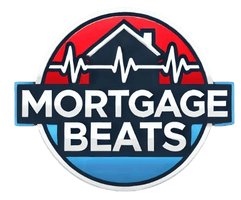Introduction
When it comes to buying a home, one of the first questions many potential homeowners ask is, How much can I borrow? Understanding your borrowing capacity is a crucial part of the homebuying process, as it determines how much you can spend on a property while staying within your budget. Mortgage affordability is not just about how much you would like to borrow—it’s about what lenders are willing to approve based on your financial profile.
There are several factors that affect how much a lender is willing to offer, and navigating these factors can be challenging for first-time buyers or those unfamiliar with the mortgage process. Your income, credit score, debt-to-income ratio, and the size of your down payment all play important roles in determining your mortgage affordability. For homebuyers, understanding these factors and how they impact your mortgage application is essential.
In this article, we’ll dive into the key factors that influence mortgage affordability, how lenders assess your borrowing capacity, and why working with an experienced mortgage provider like NorCal Real Estate & Financial Service can help you determine your maximum borrowing potential.
What is Mortgage Affordability?
Mortgage affordability refers to the maximum amount of money a lender is willing to offer a borrower based on their financial situation. It’s not just about the price of the home you want to buy—it’s about ensuring that you can manage the loan repayments without stretching your finances too thin.
Affordability assessments take into account your monthly income, existing debts, credit history, and financial obligations. These elements combine to give lenders a clear picture of your ability to repay a loan. Lenders don’t just look at how much you earn—they assess how much of your income goes toward paying off existing debts and how much room you have in your budget for additional payments.
Mortgage affordability is a key consideration because lenders don’t want to offer you a loan that you can’t afford to repay. The goal is to ensure that you’re not taking on more debt than you can handle, which could put your financial stability at risk. NorCal Real Estate & Financial Service helps homebuyers understand the factors that influence mortgage affordability and offers expert guidance to ensure clients can borrow within their means.
How Lenders Assess Mortgage Affordability
Lenders evaluate mortgage affordability through a combination of factors, the most important being your income, expenses, credit score, and overall debt levels. These components are used to determine how much of your monthly income can be allocated toward a mortgage payment without causing financial strain.
The process typically starts with lenders assessing your gross income, which includes all regular sources of income before taxes are deducted. This might include wages, bonuses, rental income, or other sources of income. Lenders then subtract your existing debt payments, such as car loans, student loans, credit card payments, and other financial obligations, to get a clearer picture of how much room you have in your budget for a mortgage payment.
The loan-to-value ratio (LTV) is another important metric lenders consider. This is the ratio of the amount of the loan compared to the appraised value of the property. The lower the LTV, the more favorable the loan is in the eyes of the lender, which can affect both how much you can borrow and the interest rates offered. Lenders want to ensure you are financially stable enough to handle a new debt obligation, and by carefully assessing these factors, they determine how much you can afford to borrow.
Key Factors That Influence Mortgage Affordability
Several key factors influence how much you can borrow for a mortgage. The most prominent of these include your income, credit score, existing debts, and down payment. These four components form the foundation of your mortgage affordability assessment, with each factor playing a role in determining your loan eligibility and terms.
Your income is the most obvious factor. The higher your income, the more you can borrow, as lenders will want to ensure you have the financial means to make regular mortgage payments. However, it’s not just about how much you earn—it’s also about how much you have left over after paying your monthly expenses.
Your credit score is another significant factor in mortgage affordability. Lenders use your credit score to gauge your ability to manage debt and your overall financial health. A higher score suggests a history of responsible borrowing and can lead to better interest rates and loan terms, while a lower score can limit your borrowing capacity.
Finally, the size of your down payment plays a major role in determining mortgage affordability. The larger your down payment, the less you need to borrow, which can increase your chances of securing a loan. A higher down payment also lowers your loan-to-value ratio, which can improve your eligibility for favorable loan terms.
The Role of Income in Mortgage Affordability
Income is perhaps the most straightforward factor in determining mortgage affordability. Your gross monthly income is used to assess how much of your income can be allocated toward mortgage payments without exceeding a reasonable debt threshold.
Lenders want to ensure that your monthly mortgage payment is manageable in relation to your income. As a general rule of thumb, many lenders allow borrowers to allocate 28%-31% of their gross income toward the mortgage payment. This percentage is often referred to as the “front-end ratio” and is part of the overall affordability equation.
However, income alone doesn’t guarantee that you’ll be approved for a loan. Lenders will also consider your existing debts, and how much of your income is already committed to debt repayments. To help improve affordability, some homebuyers may seek to increase their income through side jobs or other sources of income, or they may work to reduce their current debt load to improve their mortgage application.
For individuals looking to optimize their mortgage affordability, NorCal Real Estate & Financial Service can offer tailored advice on how to manage income sources and debts effectively, ensuring that your mortgage application is as strong as possible.
How Your Credit Score Impacts Borrowing Capacity
Your credit score plays a significant role in determining your borrowing capacity, as it gives lenders insight into your financial behavior and the likelihood that you will repay a loan on time. The higher your credit score, the better your chances of qualifying for a mortgage and the more favorable the terms you may receive.
Lenders use credit scores to assess your creditworthiness, with higher scores indicating that you are a reliable borrower. A higher score means you are more likely to receive lower interest rates and better loan terms, which ultimately lowers the cost of the loan over time. Conversely, a lower credit score may limit your ability to borrow and could result in higher interest rates, meaning you will pay more over the life of the loan.
In addition to credit scores, lenders also review your credit history to assess how well you have managed previous debts. Making timely payments, keeping credit balances low, and avoiding defaults or bankruptcies will help improve your credit score and increase your borrowing capacity. For borrowers looking to boost their credit scores before applying for a mortgage, NorCal Real Estate & Financial Service can provide advice and resources to help you improve your financial standing.
Debt-to-Income Ratio: A Crucial Measure of Affordability
The debt-to-income (DTI) ratio is one of the most important factors lenders use to assess mortgage affordability. This ratio measures the proportion of your monthly income that goes toward paying off debt. A higher DTI ratio suggests that you may be overburdened with debt, making it more difficult to afford a new mortgage payment.
Lenders typically prefer borrowers with a DTI ratio below 36%, although some programs may allow up to 43%. The back-end DTI ratio includes all monthly debt payments (including the mortgage), while the front-end ratio focuses solely on the mortgage payment. Lenders use these ratios to determine if a borrower’s income is sufficient to support the new debt.
If your DTI is higher than desired, NorCal Real Estate & Financial Service can help you improve your financial position by advising on how to reduce existing debts or increase your income before applying for a mortgage. A lower DTI ratio increases your chances of securing a more affordable loan.
The Importance of Your Down Payment
The down payment is another key factor in determining how much you can borrow for a home. The larger the down payment, the less you need to borrow, and the better your chances of securing favorable loan terms. A significant down payment lowers your loan-to-value (LTV) ratio, which reduces the lender’s risk and improves your chances of qualifying for a mortgage.
In general, lenders prefer borrowers who can contribute at least 20% of the home’s purchase price as a down payment. However, some mortgage programs allow for smaller down payments, such as FHA loans with as little as 3.5% down. The size of your down payment affects the overall cost of the loan, as a smaller down payment means you’ll need to borrow more and could face higher monthly payments.
If you’re unsure how much you can afford to put down, NorCal Real Estate & Financial Service can help guide you through different mortgage programs and help you
determine the right down payment based on your financial situation and homeownership goals.
How NorCal Real Estate & Financial Service Helps You Determine What You Can Borrow
At NorCal Real Estate & Financial Service we understand that mortgage affordability can be complex, especially for first-time buyers or those who are unfamiliar with the process. Our team of experts works closely with you to assess your financial situation and provide a clear understanding of what you can borrow based on your income, credit score, down payment, and debt.
We take the time to explain how different factors, such as DTI ratios and LTV, impact your borrowing capacity, ensuring that you’re not only pre-approved but also prepared for the mortgage process. With access to a wide range of lenders and mortgage products, NorCal Real Estate & Financial Service helps you secure the best loan for your financial profile, whether you’re purchasing your first home or refinancing an existing mortgage.
Our goal is to make the homebuying process as smooth as possible, providing personalized advice, expert support, and access to the most competitive mortgage rates on the market.
Conclusion
Understanding how much you can borrow for a mortgage is essential when planning to buy a home. Mortgage affordability is determined by several factors, including income, credit score, down payment, and debt-to-income ratio. By understanding these components and working with experts like NorCal Real Estate & Financial Service, homebuyers can confidently navigate the mortgage process and secure the best possible terms.
For those looking to purchase their first home or refinance an existing loan, NorCal Real Estate & Financial Service offers expert guidance and access to the most competitive mortgage options. We’re here to help you determine what you can afford and find the perfect mortgage solution tailored to your financial needs.
Contact NorCal Real Estate & Financial Service today to start your homebuying journey and get the most accurate understanding of what you can borrow!
Ready To Get The Best Financial Advise, Email us at: Chris@mortgagebeats.com



